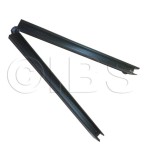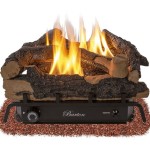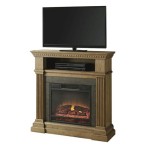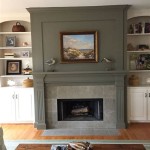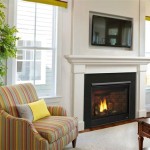Candice Olson Fireplaces: A Synthesis of Design and Functionality
Candice Olson, renowned for her eponymous HGTV design shows, has cultivated a reputation for creating spaces that are both aesthetically pleasing and functionally sound. Her approach to interior design emphasizes the importance of integrating key architectural elements into a cohesive and harmonious whole. Fireplaces, often considered the focal point of a room, are a prominent element in many of Olson's designs. Her approach to fireplace design is characterized by a meticulous attention to detail, a sophisticated understanding of spatial dynamics, and a commitment to incorporating both classic and contemporary design principles.
The integration of a fireplace into a design scheme extends beyond simply selecting a pre-fabricated model. Olson's approach involves a comprehensive evaluation of the room's existing architectural features, the client's personal style, and the desired ambiance of the space. This holistic perspective results in fireplace designs that are not merely functional heating elements but rather integral components of the overall design narrative.
Emphasis on Architectural Integration
Candice Olson's fireplace designs are distinguished by their seamless integration with the existing architectural framework of the room. This often involves a detailed analysis of the room's dimensions, existing features, and the natural light sources. Rather than treating the fireplace as an isolated element, Olson aims to incorporate it into a larger architectural composition. This may involve extending the fireplace surround to create a cohesive wall feature, integrating built-in shelving or cabinetry on either side, or using the fireplace as a central pivot point for the room's layout.
The materials used in the fireplace surround are carefully selected to complement the existing architecture and the overall design aesthetic. Olson often employs a combination of natural materials such as stone, wood, and metal to create a visually rich and texturally interesting surface. The scale and proportion of the fireplace are also carefully considered to ensure that it is appropriately sized for the room and does not overwhelm the space. In smaller rooms, Olson might opt for a more minimalist design with a sleek, modern surround. In larger rooms, a more substantial fireplace with intricate detailing might be more appropriate.
Furthermore, the placement of the fireplace is a critical factor in its architectural integration. Olson often positions the fireplace to create a natural focal point in the room, drawing the eye and creating a sense of visual balance. The surrounding furniture arrangement is then designed to complement the fireplace and create a comfortable and inviting seating area. The goal is to create a cohesive and harmonious space where the fireplace feels like an integral part of the room's overall design.
Consider, for instance, a room with existing exposed brick. Olson might choose to incorporate the brick into the fireplace design, either by using it as a partial surround or by selecting materials that complement the brick's color and texture. This creates a sense of continuity and ensures that the fireplace feels like a natural extension of the room's original architectural style.
Fusion of Classic and Contemporary Design Elements
A hallmark of Candice Olson's design philosophy is the skillful blending of classic and contemporary design elements. This approach allows her to create spaces that are both timeless and modern, appealing to a wide range of tastes and preferences. In the context of fireplace design, this might involve incorporating traditional architectural details, such as crown molding or fluted columns, into a sleek, contemporary surround.
The selection of materials plays a crucial role in achieving this fusion of styles. Olson often combines natural materials with manufactured materials to create a sense of contrast and visual interest. For example, she might pair a rustic stone surround with a polished stainless steel firebox, or a traditional wood mantel with a minimalist glass fireplace screen. This juxtaposition of styles creates a dynamic and engaging visual experience.
The use of color is another important tool in Olson's design arsenal. She often employs a neutral color palette as a backdrop, allowing the architectural details and material textures to take center stage. However, she also incorporates pops of color and pattern to add visual interest and personality to the space. These accents might be incorporated through artwork, textiles, or decorative accessories.
Consider a fireplace design that features a traditional brick surround. To add a contemporary touch, Olson might incorporate a sleek, minimalist mantel made of polished concrete. This unexpected juxtaposition of materials creates a visually striking contrast that elevates the design and prevents it from feeling too traditional. The addition of modern artwork above the mantel and contemporary furniture in the surrounding seating area further reinforces the fusion of styles.
This approach extends to the functionality of the fireplace as well. While embracing the classic appeal of a traditional wood-burning fireplace, Olson might integrate modern technologies such as remote control operation and programmable thermostats to enhance convenience and efficiency. This combination of classic aesthetics and modern functionality ensures that the fireplace is both beautiful and practical.
Emphasis on Functionality and Practicality
While aesthetic considerations are paramount in Candice Olson's designs, she also places a strong emphasis on functionality and practicality. A fireplace, beyond its visual appeal, must also serve its primary purpose as a heating source and contribute to the overall comfort and livability of the space. This involves careful consideration of factors such as the fireplace's size, location, and energy efficiency.
The size of the fireplace should be appropriately scaled to the room in which it is located. A fireplace that is too small will be ineffective at heating the space, while a fireplace that is too large can overwhelm the room and create an uncomfortable environment. Olson carefully considers the room's dimensions and insulation properties when determining the appropriate size for the fireplace.
The location of the fireplace is another critical factor in its functionality. It should be positioned in a location that allows for optimal heat distribution throughout the room. This often involves placing the fireplace in a central location or near a frequently used seating area. Olson also considers the placement of windows and doors to minimize heat loss and maximize energy efficiency.
Energy efficiency is a growing concern for homeowners, and Olson incorporates sustainable design principles into her fireplace designs. This might involve selecting energy-efficient fireplace models, such as those with sealed combustion chambers or programmable thermostats. She also emphasizes the importance of proper insulation and ventilation to minimize heat loss and improve air quality.
Beyond heating, the functionality extends to the surrounding space. Olson often incorporates built-in storage solutions around the fireplace to provide convenient access to firewood, media equipment, or other household items. This helps to keep the space organized and clutter-free, while also enhancing the fireplace's overall aesthetic appeal.
For instance, a fireplace design might include built-in bookshelves on either side of the firebox, providing ample storage for books, decorative objects, and other personal belongings. These bookshelves can also serve as a visual extension of the fireplace, creating a cohesive wall feature that adds depth and dimension to the room. The inclusion of closed storage cabinets below the bookshelves can further enhance the functionality of the space, providing hidden storage for items that are not frequently used.
Ultimately, Candice Olson's approach to fireplace design embodies a harmonious balance between form and function. Her creations are not merely decorative elements but rather integral components of a well-designed and livable space, carefully conceived to enhance both the aesthetic appeal and the practical functionality of the room.

9 Fireplace Design Ideas From Candice Olson

9 Fireplace Design Ideas From Candice Olson

9 Fireplace Design Ideas From Candice Olson

9 Fireplace Design Ideas From Candice Olson

9 Fireplace Design Ideas From Candice Olson

9 Fireplace Design Ideas From Candice Olson

Candice Tells All Basement Fireplace Becomes Focal Point Of Retreat The Times Herald

Top 12 Living Rooms By Candice Olson

Our Favorite Lighting Ideas From Candice Olson

Candice Olson Design Contemporary Living Room Toronto By Brandon Barré Architectural Interior Photographer Houzz Ie
Related Posts

